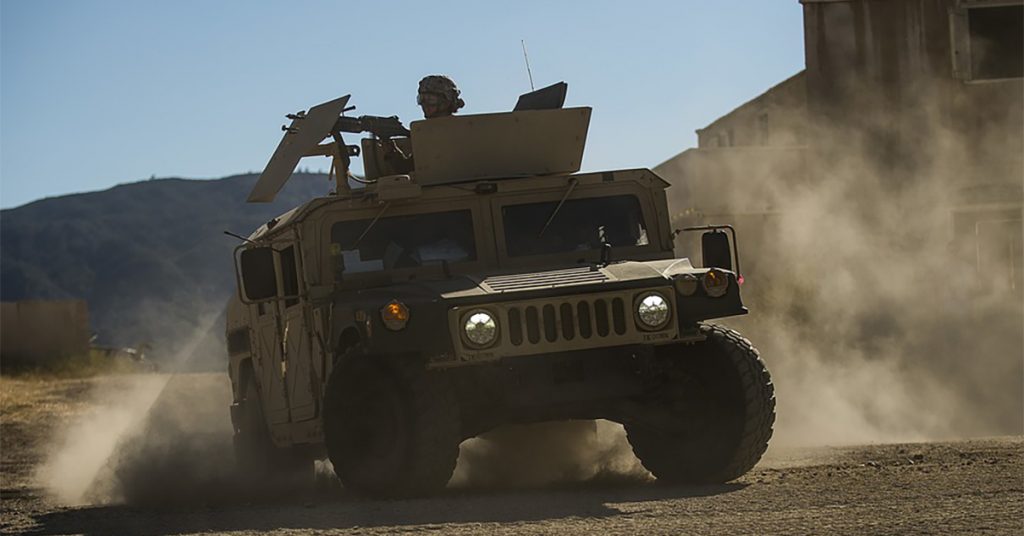The Applied Science & Technology Research Organization (ASTRO America) has been selected to coordinate a new U.S. Army initiative focused on developing an ultra-large-format metal 3D printer for the production of ground vehicles.
Built as part of the Jointless Hull Project, the system will be used to 3D print single-piece armored vehicle hulls (chassis) for tanks and Humvees. According to ASTRO, the machine is set to be the world’s largest metal 3D printer for ground vehicle production and will enable reduced lead times, significant manufacturing cost reductions, and lighter weight vehicle designs.
“The mission is to develop a large-scale tool capable of producing single, jointless combat vehicle hulls at a near net size of 30ft x 20ft x 12ft,” explains Larry Holmes, Principal Investigator at ASTRO America. “Additive manufacturing at a massive scale holds the potential to transform the way vehicles are built for the military while reducing supply chain fragility.”

Monolithic hulls for the front lines
Front-line combat vehicles are required to withstand all manner of harsh conditions, including extreme weather and surprise attacks by opposing forces. The use of monolithic hulls for these combat vehicles can have major advantages in terms of survivability and weight savings, but traditional manufacturing processes have historically struggled with such applications. This is especially true when multiple vehicle models are involved, as techniques such as machining and metal injection molding simply aren’t built for on-the-fly geometric flexibility.
This is where 3D printing comes in, as the technology is capable of enabling previously impossible part designs for improved warfighter performance. In the context of spare part production, additive manufacturing also allows for shortened lead times, which is crucial for organizations such as the U.S. Army as it is often required to dynamically adapt to high-stakes situations in limited timeframes.
Aaron LaLonde, an additive manufacturing engineer for the U.S. Army, adds, “This project will scale the benefits of metal additive manufacturing to a size range that will allow the benefits of the technology to be realized on larger system scale parts and enable next generation vehicle performance.”

Additive manufacturing in the Armed Forces
Managed by ASTRO America, the Jointless Hull Project has been contracted through LIFT, a DoD-backed national manufacturing innovation institute. Additionally, the U.S. Army Combat Capabilities Development Command Ground Vehicle Systems Center (DEVCOM GVSC) is directing the technical program while the Army’s Rock Island Arsenal – Joint Manufacturing Technology Center will be used to house the new additive manufacturing platform.
“This is an ideal project for ASTRO America and its highly experienced team” concludes Jason Gorey, ASTRO America’s Executive Director. “This is not a research project for either hardware, software or materials. This is a direct implementation project where we scale existing, but advanced methodologies to the required hull-scale size. We will be working with equipment vendors as well as system integrators to deliver on this project.”
Late last year, ASTRO America also completed a U.S. Defense Advanced Research Projects Agency (DARPA)-commissioned study to accelerate the 3D printing of hypersonic missiles. The study details design plans for a comprehensive, end-to-end Hypersonic Production Accelerator Facility (HPAF) to consolidate the entire supply chain under one roof.
Elsewhere, in Australia, 3D printer manufacturer Titomic recently signed a Heads of Agreement with machine tool manufacturer Repkon to jointly build a new 3D printing production facility for defense applications. Specifically, the factory will focus on the fabrication of Repkon-designed weapons system barrels using Titomic’s patented Kinetic Fusion (TKF) 3D printing technology.
Subscribe to the 3D Printing Industry newsletter for the latest news in additive manufacturing. You can also stay connected by following us on Twitter and liking us on Facebook.
Looking for a career in additive manufacturing? Visit 3D Printing Jobs for a selection of roles in the industry.
Featured image shows a U.S. Army Humvee. Photo via U.S. Army.



